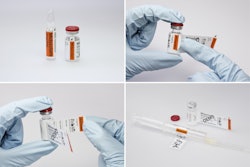
The drugs and therapies developed by pharmaceutical [companies] often fail to meet expectations, and not just because of their formulations, dosing regimens, or side effects. They fail because the industry at large operates in a way that still believes that once the drug is approved by the FDA, makes it to a pharmacist's dispensary, and is accompanied by a rockstar ad campaign, the job is done.
And to be fair it is a long haul from discovery to approval—anywhere from 12 to 20 years and up to $1BB. But that's precisely when the critical job of connecting with people—motivating, inspiring, educating, and cajoling them into following their treatment regimen—begins.
After all, what good to anybody is an untaken drug? Not to the pharmaceutical [industry], which loses an estimated $188 BB in revenue in the U.S. alone,[1] and not to patients and their payers who spend $290 BB[2] on otherwise unnecessary medical care as a result of untaken drugs. More unfortunate is the added irony that the very skills and processes of laboratory science that are foundational to developing these new drugs for patients are antithetical to the making of empathetic connections with people.
It used to be called compliance, and today, professional caregivers still speak of a patient's “non-compliance" with a recommended therapy. In another era, doctors alone had the last word on what was best for the patient. But new philosophies for approaching holistic patient care, patient bills of rights, and the growth of technologies that ping, call, and nag us to take our medicine have converged to make compliance not just paternalistic, but dated.
Today, the term of choice for those in the know is adherence. It's a more accurate term in its nuanced understanding of the balance of power between prescriber and prescribee. We are no longer compliant to another's orders, we are adherent—we literally stick—to the agreed to plan. If there were a scale that measured warm and fuzzies, adherence would barely register much higher than compliance. It almost sounds like it was produced on the same machine that spits out the pills we have been prescribed. Adherence XQ, the pill that helps you take your other pills.
Ultimately, what word we use to describe it is less important than how we define it. Commonly we shorthand it by thinking of it as simply “remembering to take our meds,” but there's more to it than that.
Take, for example, The Adherence Estimator®,[3] a three-item scale that is useful in predicting any given patient's propensity for intentional non-adherence: How convinced am I that this med is important? How concerned am I that it is harming me in some way? Is it going to be too painful to my wallet? Its cousin, unintentional non-adherence, also a clinically cold mouthful, covers plain old forgetfulness, accidentally taking a med the wrong way, or at the wrong time, or storing it incorrectly, all of which lead to reduced overall adherence.[4]
Shouldn’t we also include all of the gradations of our messy, real lives? The moments that may not be completely thought out but are more semi-conscious? Call it spontaneous non-adherence, like when you get an unexpected, unpleasant reaction, which albeit is within normal range but freaks the beans out of you causing you to chuck the rest in trash?
Intentional, yes, but not really intended. Or it tastes bad or depresses you or there’s a social stigma attached to your diagnosis or its packaging is just a pain in the glutes.
How about we continue the work of evolving adherence by drawing on the tools of brand development? For starters, we can begin to think of patients as consumers and approach adherence much like consumer brands would approach retention or loyalty.
Just as Starbucks defines coffee as everything that goes on around the actual cup of joe, let’s define adherence holistically.
Let's define adherence from a consumer-first point ov view as: any barrier that will get in the way of a consumer’s well-being and best interests. Cost and education, for sure. Imperfect memories, you bet. But let’s also add to that the realities of our hectic lives, cultural dynamics, and throw in a general mistrust of “Big Pharma” for good measure. Let’s make it about them and their real lives, not just a hypothesis on what’s preventing them from achieving their best selves.
Just as Help Remedies thinks of the person first when designing its products, let’s put the person at the center of the process, not the disease.
Let’s reframe how we address the entire arc of drug development: from targeting a disease to marketing a brand-name pharmaceutical. Keep in mind that a drug is not just the unpronounceable chemical compound in small print. It’s also the What (form), the When (frequency) and the How Much (dose), all the stuff that we need to be able to incorporate into our lives. Let’s aim to develop solutions that are based on the person and not solely the condition.
Just as Method Home designs décor you want to display first and household cleaners you need to use second, let’s aim to fit into our patients’ lives.
Let’s really understand their lives not as patients but as people whose identities are only partially defined by whatever ails them. What motivates them? What do they think and feel about their lives? What hopes and dreams do they have? How do they live their day to day? What makes them feel whole? Let’s aim to fit into their lives instead of asking them to adhere to a new, incremental behavior.
Just as Blueprint Cleanse connects to our desire to socialize dieting, let’s find a way to connect with our consumers’ deeper motivations.
Let's look beyond the rational, cognitive drivers of adherence, what we consciously agree to, what we say we understand, what we promise to do but then somehow don't for no reason at all. Let’s consider how emotional, non-verbal arguments can be made with design and the language of form so that we only design brands that connect with people emotionally and get invited into their lives, brands that say, “You’re doing great, Good Job, Keep Going!”
Let’s build brands, not just drugs. Let’s help people help themselves. Let’s solve holistically.
References:
[1] Capgemini Consulting: Estimated Annual Pharmaceutical Revenue Loss Due to Medication Non-Adherence, 2012
[2] New England Healthcare Institute: Thinking Outside the Pillbox: A System-wide Approach to Improving Patient Medication Adherence for Chronic Disease, 2009.
[3] Merck Sharp & Dohme Corp, 2008
[4] Gadkari and McHorney: Unintentional non-adherence to chronic prescription medications: How unintentional is it really? BMC Health Services Research 2012 12:98
—Article written by Brian McDonagh, a Strategy Director at NYC-based brand agency CBX, who draws from his background is psychology research to bring greater meaning and relevance to brands. He works from the belief that the best brands understand what people need, and then offer more meaning, value, delight, and change.





















